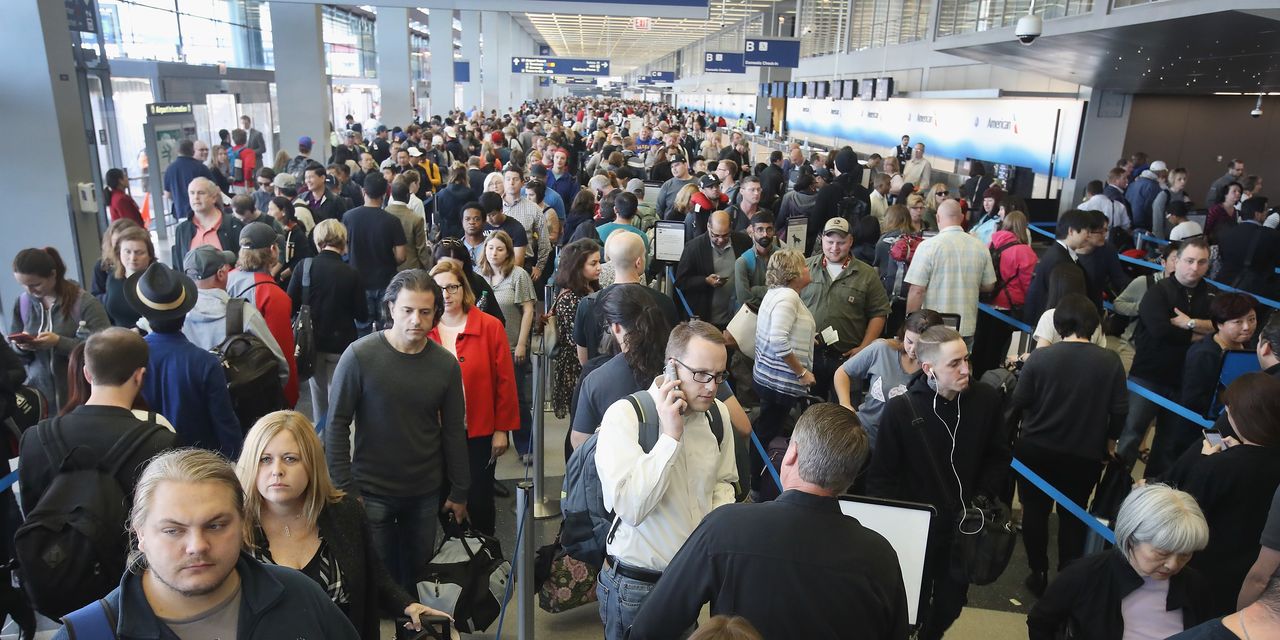There are lingering concerns that air travel this summer could once again be hectic for flyers.
Despite cautious optimism that the busy season should run more smoothly than 2022, top travel industry leaders fear the threat of delays, cancellations and long waits may not be over for passengers.
“We know the system is going to be stretched,” said Geoff Freeman, president and CEO of the U.S. Travel Association, which represents airlines, hotels and tourism agencies across the travel sector.
Speaking to reporters on April 26, Freeman spoke of an air travel system “struggling to handle the demand,” which is “likely to create substantial frustration.”
The pre-summer warning comes as passengers have flooded airports at rates not seen since 2019.
Between March 2020 and December 2022, there was only one day on which TSA agents at U.S. checkpoints screened more than 2.5 million passengers: November 27, 2022, also known as the Sunday after Thanksgiving.
Single-day checkpoint volume has exceeded that mark well over a dozen times since March 10 of this year.
“And we don’t see that slowing down,” interim Federal Aviation Administration administrator Billy Nolen told Congress April 26.
Plus: ‘Say hello to your crew’: How NOT to be a jerk when you fly, according to flight attendants and TSA workers
Will air travel be better in summer 2023?
As NerdWallet has reported, there is reason for optimism that the travel experience could at least be smoother than it was in 2022, taking into account the decreased cost of some travel expenses and a more even supply, demand and staffing equation.
As of February, major U.S. airlines employed nearly 14% more workers than at the end of 2021. That’s the most workers in 20 years, according to Airlines for America, the trade group for the largest carriers.
This is a key step toward solving staffing issues that contributed to last summer’s challenges.
The airlines “have been making every effort to prepare” for the season, the organization said in a statement.
In fact, the numbers do point toward improvement.
Since the start of January, flight cancellation rates among the five largest airlines are just a fraction of those seen during that same period last year, according to data from flight-tracking site FlightAware.
Much of the concern now surrounds staffing at air traffic control facilities that are, in many ways, the nerve centers of our national airspace.
In a memo this spring, the FAA said its certified air traffic controller staffing is 19% off its target, including being 46% off the mark at the FAA’s critical New York facility.
The agency relaxed use-it-or-lose-it airline flight rules (known as “slots”) at three major hub airports in New York and Washington, D.C. to combat the problem. This step allows airlines to reduce flight schedules in an effort to ease congestion and, hopefully, subdue delays. Multiple airlines have praised the move.
Freeman warned that staffing challenges could still cause disruptions in New York and create “a ripple effect nationwide.”
Also see: Expedia is benefiting as gross travel bookings are up online
How can I get through U.S. customs faster?
It’s not just flights that could cause headaches.
The U.S. Travel Association also reports a rapidly increasing problem: Passengers often face “excruciating” waits at U.S. Customs and Border Protection following international flights.
“There’s no doubt in recent weeks, perhaps months, the issue has really begun to peak,” Freeman said, citing wait times during busiest hours stretching from one to three hours.
It’s a problem, he noted, that may “only get worse” amid an expected busy summer, particularly for international travel.
The best way for travelers to skirt the longest waits at passport control is to enroll in Global Entry, which fast-tracks members through passport control and includes TSA PreCheck access. The five-year membership costs $100, but some travel credit cards offer a statement credit for the fee.
Right now, though, enrolling in the program is easier said than done.
Customs and Border Protection continues to report backlogs scheduling new applicant in-person interviews and currently estimates Global Entry processing times at four to six months.
Conditionally approved Global Entry applicants can skirt the wait for an in-person interview (and potentially the longest lines at customs, too) through the Global Entry Enrollment on Arrival option, which involves an interview upon arrival at customs from an international flight.
You might like: This style of travel is growing more popular among the 50-plus set, and it can offer a richer, more relaxing experience
The bottom line
Will summer 2023 air travel look better than last year?
“I’m hopeful,” Freeman said.
“We’ve learned a lot over the last year,” American Airlines CEO Robert Isom added during an April 27 call with investors. “Let’s face it: Summer 2022 was pretty rocky.”
But that may be of minimal reassurance to passengers conjuring mental images of luggage piles, crowded terminals and tarmac waits — memories not alleviated by Southwest Airlines’
LUV,
holiday meltdown and the January nationwide ground stop triggered by an FAA computer system outage.
With that tumultuous recent history — and the FAA’s lingering air traffic controller staffing problem in mind — travel industry leaders are preaching an all-too-familiar mantra for passengers headed to the airport in the coming months.
“The obvious piece of advice is patience,” Freeman said. “The patience you feel when you go to the airport the Wednesday before Thanksgiving.”
More From NerdWallet
Sean Cudahy writes for NerdWallet. Email: [email protected].
Read the full article here




